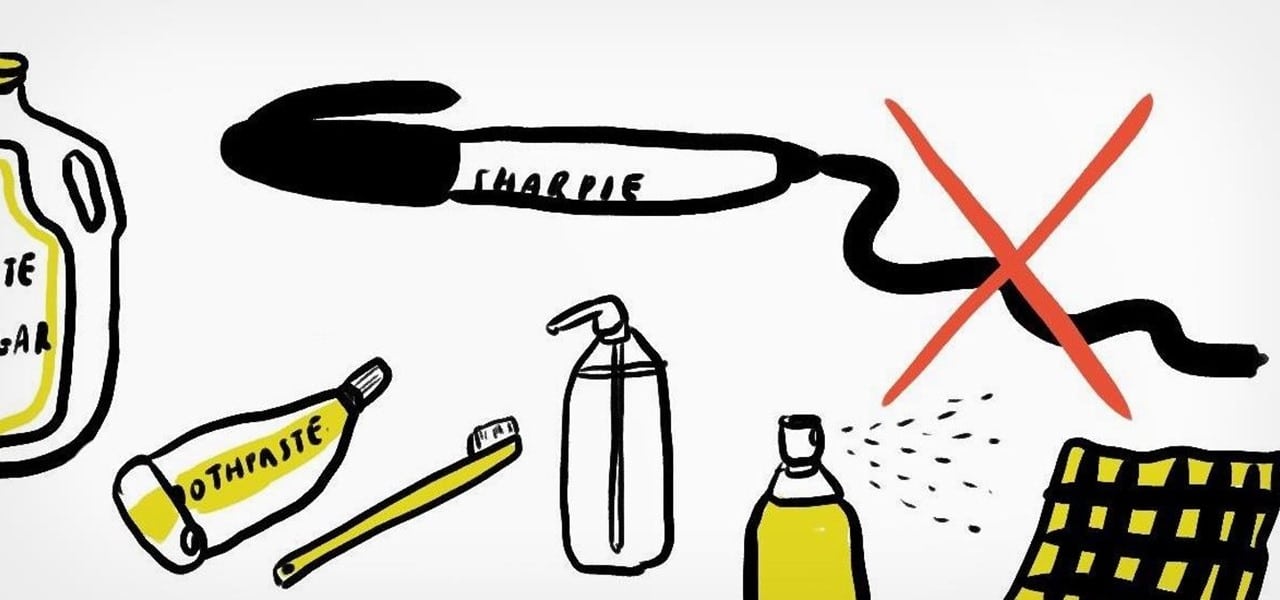Everybody has a story about a Sharpie episode, right? Mine celebrities my daughter Britta, that had been a toddler at the moment. We had been in the middle of moving, and while I was busy cleaning and packaging, she came across the permanent mark I was using to tag boxes.

1: How To Remove Permanent Marker From Brick
For a permanent marker on brick, create a 50-50 solution of baking soda and water. Work into permanent marker stain with a soft-bristle brush. Let sit for five minutes. Rinse the brick surface. If stain remains, apply hydrogen peroxide, bleach diluted with water (follow the directions on the jar ), or a multipurpose waterless mechanic’s hand cleaner (follow the manufacturer’s directions ). Let sit for a few minutes. Rinse with clean water.
2: How To Remove Permanent Marker From Canvas
For permanent mark on canvas upholstery, then blot the stain with rubbing alcohol until removed. (Test on an inconspicuous part of the upholstery, to begin with, to make certain colors do not run.) Sponge with clear, cold water. Blot dry. Note: Follow any instructions on the upholstery tag too.
To remove a permanent marker stain from canvas, rinse the thing under a steady stream of cold water until the water runs clear. Blot stain with rubbing alcohol (test in an inconspicuous spot first), wash, and air-dry. Wash according to the garment’s label. Air-dry, and repeat if needed.
3: How To Remove Permanent Marker From Carpet
To get rid of the permanent marker from natural-fiber carpet, treat using a customer dry-cleaning solvent, according to the manufacturer’s instructions, then blot dry. Dab with warm sudsy water, then blot dry. Repeat if needed.
To remove permanent marker from artificial carpeting, dab with cloth dipped in a solvent, like a customer dry-cleaning fluid (follow the manufacturer’s instructions ) or acetone-free nail polish remover. Wait 15 minutes. Blot dry. Blot with a warm moist cloth. Blot dry.
4: Ceramic Tile
To remove permanent marker from ceramic tile, wash the blot with warm sudsy water. Then dab with rubbing alcohol on a cotton swab. Wipe with warm sudsy water again. Rinse and dry. If stain remains, carefully draw on the mark with a dry-erase mark, then rub it with a clean, dry cloth. If stain remains, dab toothpaste and baking soda. Let dry. Wipe with water, then wipe dry.
5: Chenille
To remove permanent marker from chenille upholstery, then blot the stain with rubbing alcohol until it is removed. (Test in an inconspicuous part of the upholstery, to begin with, to make certain colors don’t run.) Sponge with cold water. Blot dry. To remove a permanent marker stain from washable chenille, wash the blot beneath a steady stream of cold water until the water runs clear. Blot stain with rubbing alcohol, rinse and wash according to the garment label’s instructions. Check to see if the stain stays before drying as guided.
6: How To Remove Permanent Marker From Concrete
To remove permanent marker from concrete, make a 50-50 solution of baking soda and water. Work into permanent marker stain with a soft-bristle brush. Let sit for five minutes. Rinse the concrete surface with clean water. If stain remains, try hydrogen peroxide, bleach diluted with water (blend according to the bottle’s instructions ), or even a multipurpose waterless mechanic’s hand cleaner. Let sit for a couple of minutes. Rinse with clear water.
7: Corduroy
Blot the permanent marker stain with rubbing alcohol before it’s taken out of the corduroy upholstery. (Test in an inconspicuous part of the upholstery first to make sure colors do not run.) Sponge with cold water. Blot dry. To remove a permanent marker stain from washable corduroy, wash the blot under a steady stream of cold water until the water runs clear.
Blot stain with rubbing alcohol (test on an inconspicuous spot first), wash, and wash according to the garment label’s instructions. Check to find out if the stain stays before drying as guided.
Tools and Materials Needed
- Baking Soda
- Water
- Soft-Bristle Brush
- Hydrogen Peroxide
- Bleach
- Hand Cleaner
- Rubbing Alcohol
- Sponge
- Dry-cleaning Solvent
- Nail Polish Remover (Like Acetone)
- Cotton Swabs
- Clean dry cloth
- Toothpaste
More For You:
Things to Know About Light Switch Wiring Before You Attempt Any DIY Electrical Function
How to Build a Concrete Wall For Your Own Private Backyard Retreat